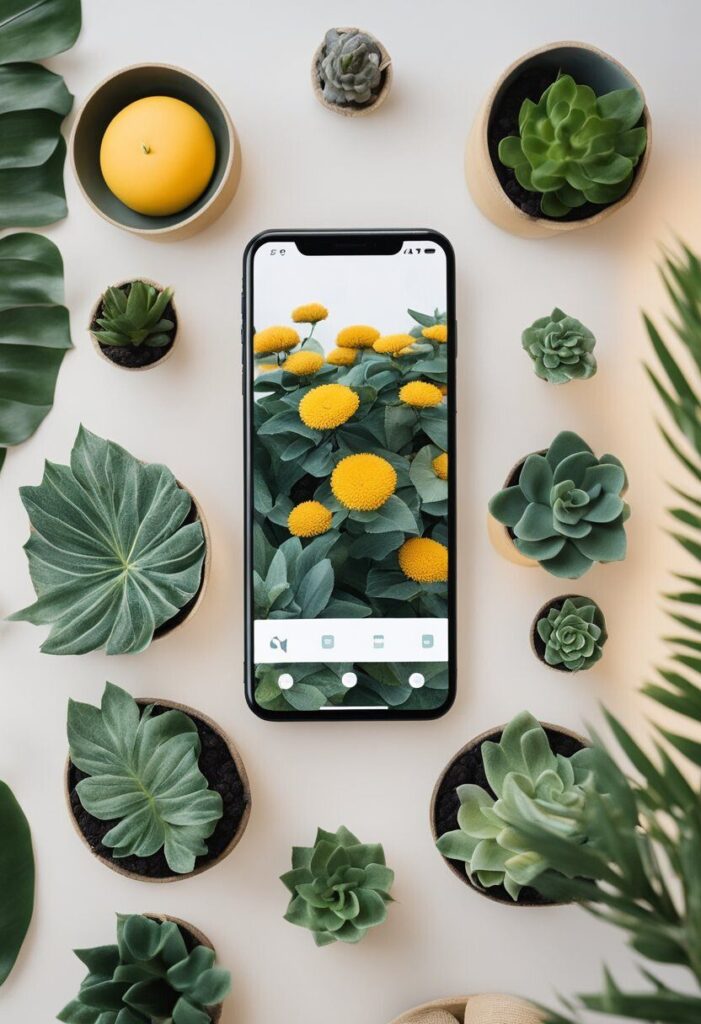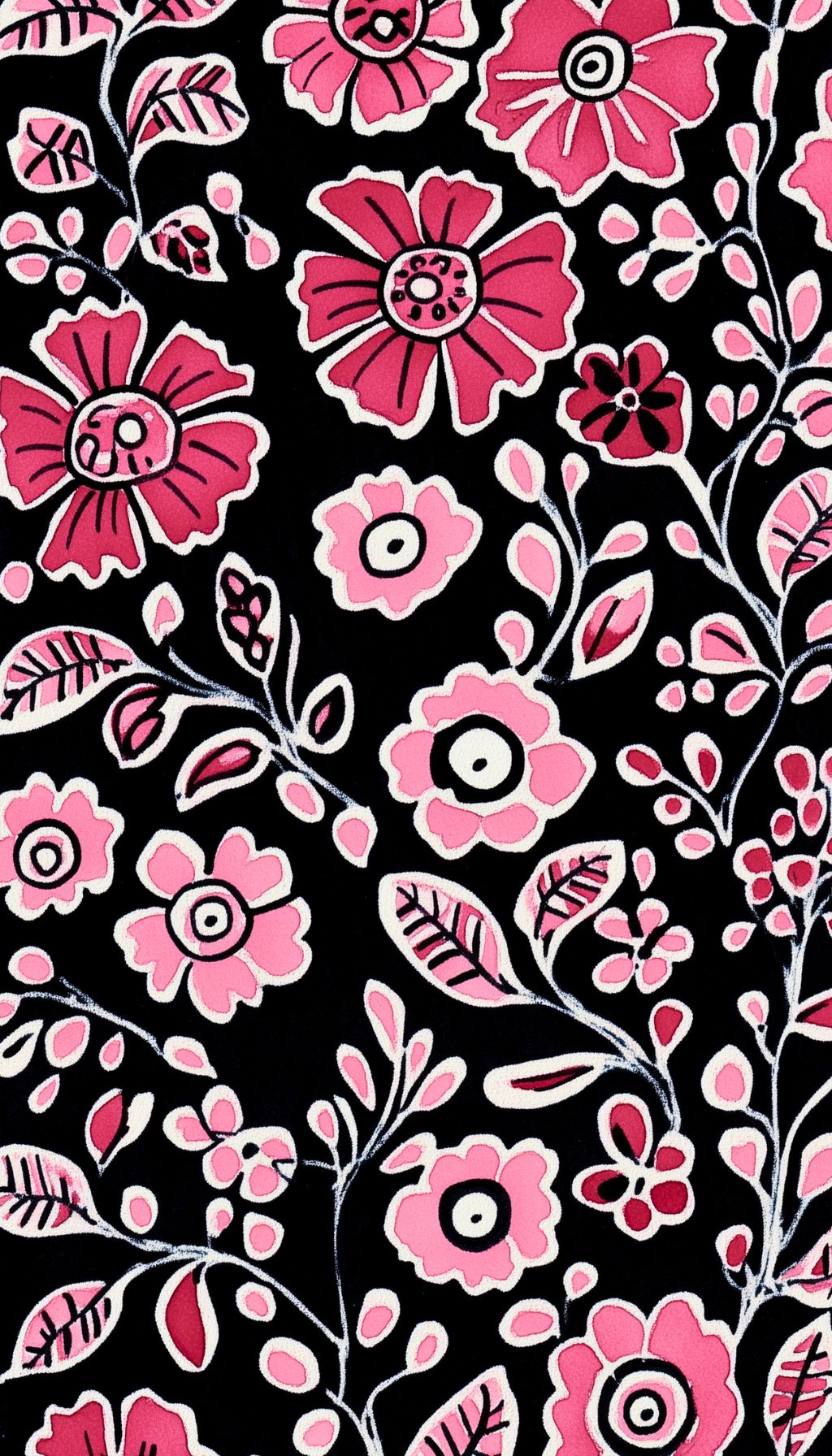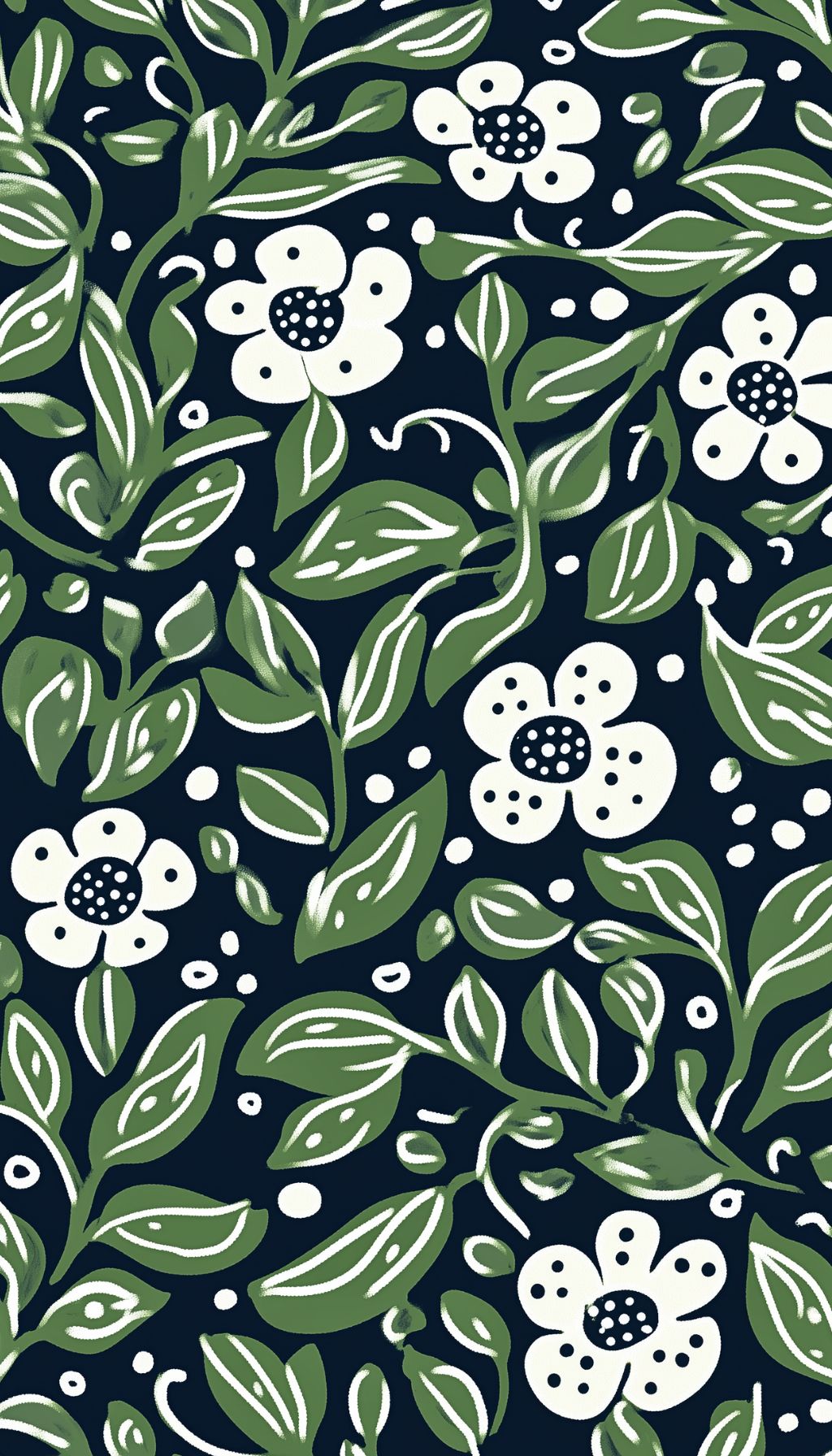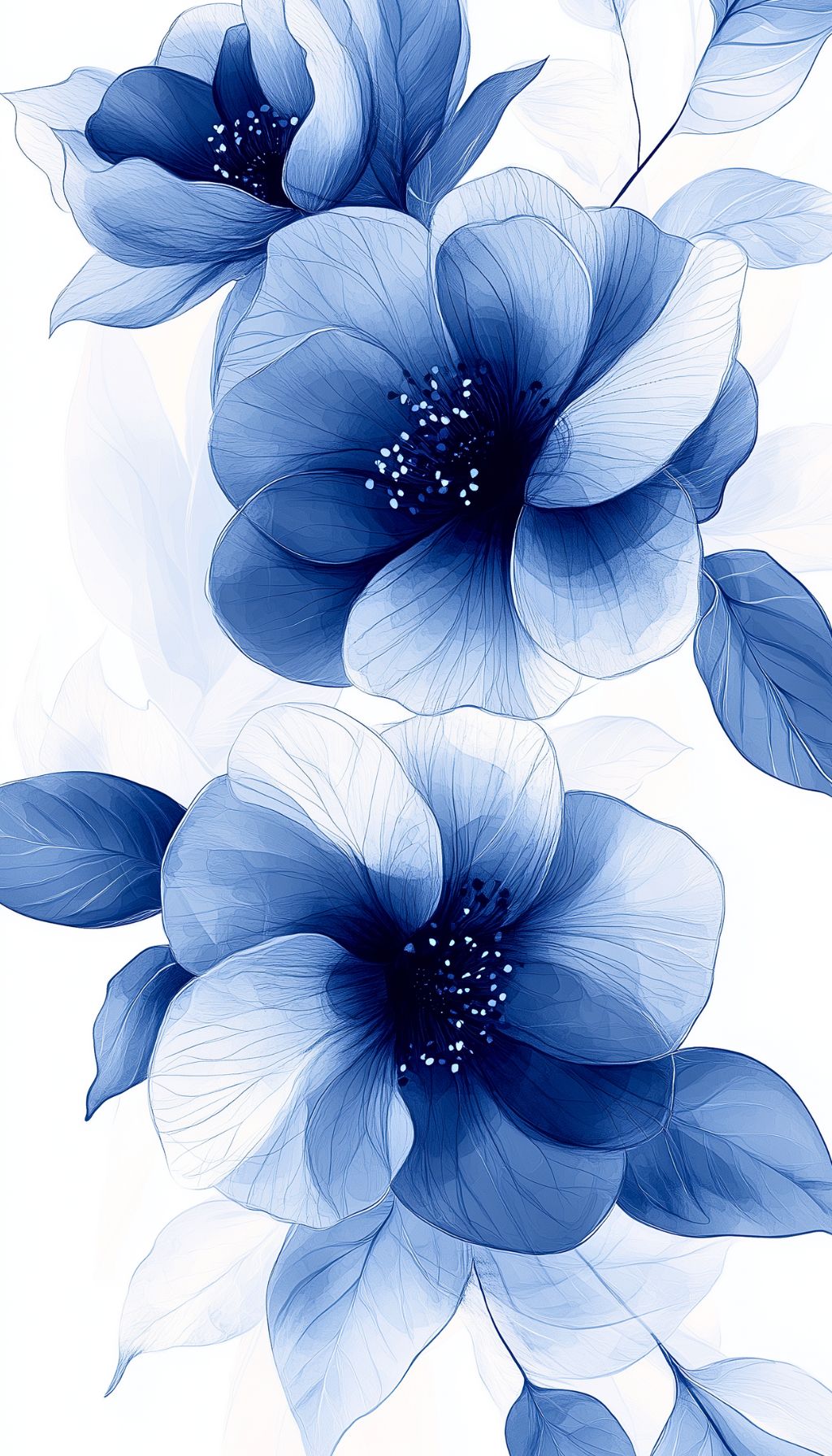Phone wallpapers are a personal choice and can say a lot about a person’s mood, personality, and preferences.
With the rise of smartphones and the increasing amount of time people spend on their devices, it’s no surprise that choosing the right wallpaper has become an important aspect of phone customization.
However, what many people don’t realize is that there is actually a psychological aspect to choosing the right phone wallpaper for your mood.

Understanding the psychology of color is an important factor when it comes to choosing the right phone wallpaper.
Different colors can evoke different emotions and moods, and this can have a significant impact on our mental well-being.
For example, blue is often associated with calmness and relaxation, while yellow can evoke feelings of happiness and positivity.
By choosing a wallpaper with the right color palette, individuals can use their phone as a tool to regulate their mood and emotions.
Another important aspect of phone wallpaper selection is the role of imagery in mood regulation.
Studies have shown that exposure to natural environments can have a positive impact on mood and cognitive function.
By choosing a wallpaper with a natural landscape or image, individuals can simulate the experience of being in nature and reap the psychological benefits that come with it.
Key Takeaways
- Color plays an important role in choosing the right phone wallpaper for your mood.
- Imagery can have a significant impact on mood regulation and cognitive function.
- By customizing phone wallpapers, individuals can use their devices as a tool for psychological well-being.
Understanding the Psychology of Color
When it comes to phone wallpapers, color is an essential aspect that can affect an individual’s mood and emotions.
Understanding the psychology behind color can help in choosing the right wallpaper that can positively impact one’s mental state.
This section will delve into the emotional responses to color and color theory and mood.
Emotional Responses to Color
Different colors can evoke various emotions from individuals.
For instance, red is associated with passion, love, and excitement, while blue is associated with calmness, trust, and serenity.
Green is associated with nature, growth, and harmony, while yellow is associated with happiness, optimism, and energy.
Orange is associated with warmth, enthusiasm, and creativity, while purple is associated with luxury, royalty, and spirituality.
Color Theory and Mood
According to a source, color theory is the study of how colors are created, combined, and how they affect human emotions and behavior.
Color theory is an interdisciplinary field that combines art, science, and psychology. Color theory has a long and fascinating history that dates back to ancient cultures.
Color theory suggests that colors can be divided into warm and cool colors.
Warm colors such as red, orange, and yellow are associated with energy, excitement, and passion.
On the other hand, cool colors such as blue, green, and purple are associated with calmness, serenity, and relaxation.
Therefore, when choosing a phone wallpaper, one should consider the mood they want to evoke and select the right color accordingly.
The Role of Imagery in Mood Regulation

Choosing the right phone wallpaper can impact an individual’s mood positively or negatively. The imagery on the phone wallpaper can affect an individual’s emotional state, and it can be a tool in regulating one’s mood.
People use different types of wallpapers to regulate their moods, and the following are some of the ways in which imagery can be used to regulate mood.
Personal Photos as Wallpapers
Personal photos are a popular choice for phone wallpapers.
They can remind individuals of happy memories, loved ones, and special events.
Personal photos can evoke positive emotions and bring back happy memories, which can help regulate mood.
Seeing a photo of a loved one can make an individual feel loved and happy, which can positively impact their mood.
Nature Imagery and Relaxation
Nature imagery is a popular choice for phone wallpapers.
Nature imagery can evoke feelings of calmness, relaxation, and peace.
Studies have shown that exposure to nature imagery can reduce stress and anxiety levels [1].
Using nature imagery as a wallpaper can help individuals relax and reduce stress levels.
Abstract Designs and Focus
Abstract designs are another popular choice for phone wallpapers.
Abstract designs can evoke feelings of focus and creativity.
Using abstract designs as a wallpaper can help individuals focus on their tasks and increase productivity levels.
Abstract designs can also be used to evoke positive emotions and boost creativity levels.
[1] Bratman, G. N., Hamilton, J. P., & Daily, G. C. (2012). The impacts of nature experience on human cognitive function and mental health. Annals of the New York Academy of Sciences, 1249(1), 118-136.
Personality and Wallpaper Choice

When it comes to choosing a phone wallpaper, people tend to pick images that reflect their personality and values.
This is because wallpapers are a reflection of one’s identity and can have a significant impact on their mood and emotions.
Extroversion vs. Introversion
Research has shown that extroverted individuals tend to choose wallpapers that are bright, colorful, and visually stimulating.
They often prefer images of people, places, and events that are associated with socializing and having fun.
On the other hand, introverted individuals tend to prefer wallpapers that are more subdued, calming, and reflective.
They often choose images of nature, landscapes, and abstract designs that are associated with quiet contemplation and introspection.
Wallpapers Reflecting Personal Values
Wallpapers can also reflect a person’s values and beliefs.
For example, someone who values creativity and self-expression may choose a wallpaper that features an artistic design or a quote that inspires them.
Similarly, someone who values family and relationships may choose a wallpaper that features a photo of their loved ones or a sentimental message.
Cultural Influences on Wallpaper Selection

When it comes to choosing the perfect wallpaper for your phone, cultural influences can play a significant role in decision making. Here are a few cultural factors that can impact wallpaper selection:
Cultural Symbolism in Imagery
Different cultures have unique symbols and meanings associated with specific colors and patterns.
For example, in some Asian cultures, the color red is associated with good luck and fortune, while in Western cultures, it is often associated with passion and love.
Similarly, certain patterns such as paisley or floral designs may be more popular in some cultures than others.
Understanding the cultural symbolism behind different colors and patterns can help individuals choose a wallpaper that resonates with their cultural background and personal preferences.
Trends in Wallpaper Popularity
Trends in wallpaper popularity can also be influenced by cultural factors.
For example, in recent years, there has been a growing trend towards minimalist designs in Western cultures, while in some Eastern cultures, intricate patterns and bold colors are still popular.
Keeping up with current trends can help individuals stay up-to-date with the latest styles and express their personal sense of fashion.
The Impact of Technology on Wallpaper Trends

The evolution of technology has had a significant impact on the trends in phone wallpapers.
With advancements in screen technology, phone wallpapers have become more vivid, detailed, and realistic. This has led to a shift in wallpaper trends from simple and minimalistic designs to more complex and intricate ones.
Advancements in Screen Technology
The introduction of high-resolution screens has allowed for the creation of wallpapers with more detail and clarity.
This has led to an increase in the popularity of wallpapers featuring intricate patterns, textures, and designs.
Additionally, the use of OLED screens has enabled the creation of wallpapers that take advantage of the screen’s ability to display deep blacks, resulting in wallpapers that are more vibrant and eye-catching.
Social Media and Sharing
The rise of social media has also had a significant impact on wallpaper trends.
With the ability to easily share wallpapers on platforms like Instagram, Pinterest, and Tumblr, users are more likely to choose wallpapers that are aesthetically pleasing and shareable.
This has led to an increase in the popularity of wallpapers featuring popular culture references, inspirational quotes, and abstract designs.
Customization and Control

In today’s digital world, customization and control over digital spaces have become increasingly important.
People want to personalize their devices to reflect their mood, personality, and style. The phone wallpaper is one such area where people can exercise their creativity and control.
The Need for Personalization
According to a study by Wallpapers.com, people spend an average of 3.5 hours per day on their smartphones.
This means that people are constantly looking at their phone screens, and the wallpaper they choose can have a significant impact on their mood and mental well-being.
Personalization of the phone wallpaper can help people feel more connected to their devices and create a sense of ownership.
It can also help people express their individuality and creativity.
By choosing a wallpaper that reflects their mood or personality, people can feel more in control of their digital space.
Control Over Digital Spaces
Customization of the phone wallpaper also gives people control over their digital spaces.
In a world where people are constantly bombarded with information, notifications, and advertisements, having control over one’s digital space can be empowering.
By choosing a wallpaper that is calming, inspiring, or uplifting, people can create a digital space that helps them relax, focus, or feel motivated.
This can be especially important for people who use their phones for work or study and need to maintain a productive mindset.
Psychological Benefits of Wallpaper Customization

Personalizing the phone wallpaper is a simple yet effective way to boost one’s mood and express their identity. The following subsections will elaborate on the psychological benefits of wallpaper customization:
Mood Enhancement
The choice of wallpaper can have a significant impact on one’s mood.
According to a study, selecting wallpaper patterns that one loves for their walls can profoundly impact their mental health and well-being.
Cheerful and bright designs can uplift one’s mood and make spaces more enjoyable. On the other hand, calming themes can help reduce stress and anxiety levels.
Identity Expression
Customizing the phone wallpaper can also help express one’s identity.
By selecting images that resonate with their personality, individuals can communicate their interests, values, and beliefs.
It can also help strengthen social connections by providing a conversation starter or a shared interest.
Choosing the Right Wallpaper for Your Mood
Mood Assessment Techniques
Choosing the right phone wallpaper can have a significant impact on one’s mood and overall well-being. However, it can be challenging to determine what wallpaper would be best suited for an individual’s current mood.
To help with this, there are a few mood assessment techniques that can be used.
One technique is to reflect on one’s current emotions and feelings.
This can be done by taking a few minutes to sit quietly and focus on one’s thoughts and emotions. Once an individual has a better understanding of their current mood, they can select a wallpaper that aligns with those emotions.
Another technique is to use a mood assessment app.
There are various apps available that can help individuals assess their current mood and provide suggestions for wallpapers that align with those emotions.
For example, the app “Mood Wallpaper” provides users with a selection of wallpapers based on their current mood.
Wallpaper Selection Strategies
Once an individual has a better understanding of their current mood, they can begin to select a wallpaper that aligns with those emotions.
There are a few wallpaper selection strategies that can be used to make this process easier.
One strategy is to choose a wallpaper that features calming colors such as blue or green.
These colors have been shown to have a calming effect on individuals and can help reduce stress and anxiety.
Another strategy is to choose a wallpaper that features a nature scene.
Research has shown that exposure to nature can have a positive impact on an individual’s mood and overall well-being.
Lastly, individuals can choose a wallpaper that features a motivational quote or image.
This can help inspire and motivate individuals, especially during times of stress or uncertainty.



